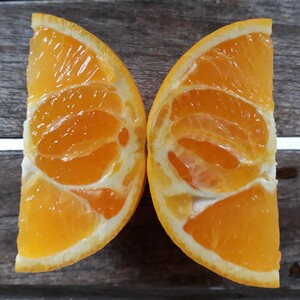Navel oranges
Navelate
Citrus sinensis (L.) Osb.
TCF-170
VARIETAL GROUP
ORIGIN
AVAILABILITY
Sweet oranges
Spain
January – May

ORIGIN DATA:
Navelate is the result of the selection of a mutation that occurred on a Washington Navel tree planted in 1939 in Vinaroz (Castellón, Spain). The mutation was discovered in 1948 by Adrián Gil, and the new variety was marketed in 1957. It is characterized by maturing around three weeks later than Washington Navel, in addition to its organoleptic quality, which is maintained for several months on the tree.
TREE AND FRUIT DESCRIPTION:
The tree is moderately vigorous, spherical and leafy. It has thorns at the base of the leaves of new shoots. Spherical-elongated fruit, of medium size among the Navels and with very little apparent apical navel, the second fruit being totally confined within the main fruit. Very thin, smooth but finely pitted rind, pale orange in color. Bright flesh, medium juicy, fresh and with a balanced flavor. Variety with low levels of limonin, so its organoleptic quality is exceptional, even that of its juice. Seedless.
USES:
Navelate is considered one of the best table oranges, so its fresh consumption is its greatest attraction.





